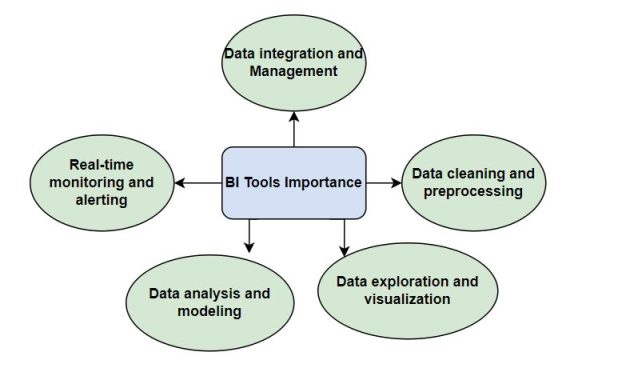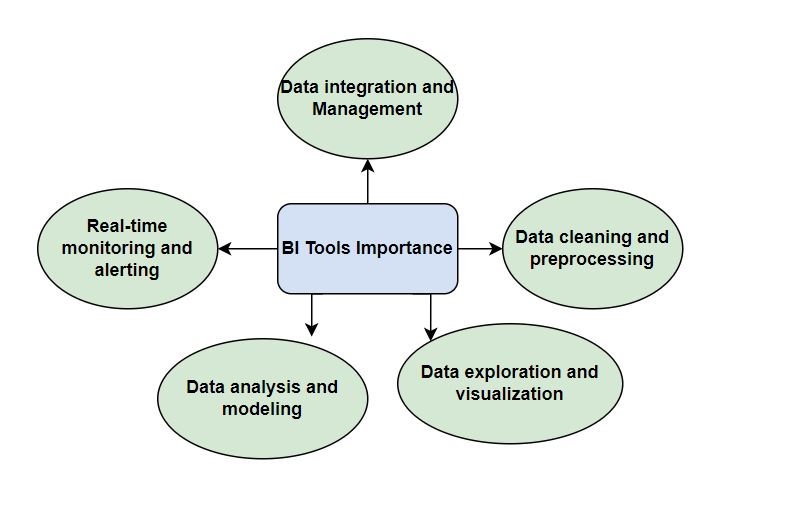
Why Safety Officers Need These BI Tools: Data-Driven Decisions for a Safer Workplace
In today’s dynamic and often hazardous work environments, safety officers face the critical responsibility of protecting employees and preventing workplace accidents. Traditionally, this has involved manual inspections, incident reports, and reactive measures. However, the modern landscape demands a more proactive, data-driven approach. This is where Business Intelligence (BI) tools become indispensable. These tools empower safety officers with the insights they need to make informed decisions, identify potential risks, and ultimately, create a safer workplace. This article explores why safety officers need these BI tools and how they can leverage them effectively.
The Evolution of Workplace Safety
Workplace safety has evolved significantly over the years. Early approaches often relied on basic checklists and reactive measures. After an accident, investigations would be conducted, and corrective actions implemented. This approach, while necessary, often failed to address the root causes of incidents. The rise of data analytics and BI tools has ushered in a new era of proactive safety management. This shift allows safety officers to move from a reactive to a predictive and preventative approach. By analyzing data from various sources, safety officers can identify trends, predict potential hazards, and implement preventative measures before accidents occur.
Understanding Business Intelligence (BI) Tools
Business Intelligence (BI) tools are software applications designed to collect, process, analyze, and visualize large datasets. They transform raw data into actionable insights, helping organizations make data-driven decisions. For safety officers, BI tools can analyze data from various sources, including incident reports, near-miss reports, safety inspections, employee training records, and environmental monitoring systems. These tools can identify patterns, trends, and anomalies that might not be apparent through manual analysis. Popular BI tools include Tableau, Power BI, and QlikView, each offering a range of features for data visualization, reporting, and analysis.
Key Benefits of BI Tools for Safety Officers
The advantages of integrating BI tools into safety management are numerous. Safety officers who embrace these tools gain a significant edge in their ability to create a safer environment. Some of the key benefits include:
- Improved Hazard Identification: BI tools can analyze historical data to identify patterns and trends related to specific hazards. This allows safety officers to focus their efforts on the areas where risks are most prevalent.
- Enhanced Risk Assessment: By analyzing data, safety officers can develop more accurate risk assessments. This helps prioritize safety interventions and allocate resources effectively.
- Proactive Incident Prevention: BI tools can identify potential hazards before they lead to accidents. This allows safety officers to implement preventative measures and reduce the likelihood of incidents.
- Better Training and Education: By analyzing incident data, safety officers can identify areas where employees need additional training. This ensures that training programs are targeted and effective.
- Increased Efficiency: BI tools automate many of the tasks associated with data analysis and reporting. This frees up safety officers to focus on other important aspects of their job.
- Improved Communication: BI tools provide clear and concise data visualizations that can be used to communicate safety information to employees and management.
- Data-Driven Decision Making: The ultimate benefit is the ability to make data-driven decisions, leading to more effective safety programs and a safer workplace.
Data Sources for BI Tools in Safety Management
The effectiveness of BI tools depends on the quality and availability of data. Safety officers can leverage various data sources to gain a comprehensive understanding of workplace safety. Some of the most important data sources include:
- Incident Reports: Detailed reports of all workplace incidents, including near misses, injuries, and fatalities.
- Near-Miss Reports: Reports of incidents that could have resulted in an accident but did not.
- Safety Inspections: Records of regular inspections of equipment, processes, and the work environment.
- Employee Training Records: Documentation of all employee training, including dates, topics, and completion rates.
- Environmental Monitoring Data: Data on air quality, noise levels, and other environmental factors.
- Equipment Maintenance Records: Records of equipment maintenance and repairs.
- Employee Performance Data: Information on employee performance and work habits.
Implementing BI Tools: A Step-by-Step Approach
Implementing BI tools can seem daunting, but a systematic approach can ensure a successful deployment. Here’s a step-by-step guide:
- Define Objectives: Clearly define the goals of using BI tools. What specific safety challenges are you trying to address?
- Identify Data Sources: Determine which data sources are relevant and accessible.
- Choose a BI Tool: Select a BI tool that meets your needs and budget. Consider factors like ease of use, features, and integration capabilities.
- Collect and Prepare Data: Gather data from the identified sources and clean it to ensure accuracy.
- Analyze Data: Use the BI tool to analyze the data and identify patterns, trends, and anomalies.
- Create Reports and Dashboards: Develop reports and dashboards to visualize the data and share insights.
- Implement Actions: Based on the data analysis, implement preventative measures and other safety improvements.
- Monitor and Evaluate: Continuously monitor the effectiveness of the safety programs and make adjustments as needed.
Specific BI Tools and Their Applications for Safety Officers
Several BI tools are particularly well-suited for use by safety officers. Here are a few examples and their common applications:
- Tableau: Known for its powerful data visualization capabilities, Tableau allows safety officers to create interactive dashboards and reports to quickly identify trends and anomalies.
- Power BI: Microsoft’s Power BI offers a user-friendly interface and seamless integration with other Microsoft products. It’s ideal for creating comprehensive safety reports and sharing insights across the organization.
- QlikView: QlikView is a flexible BI tool that allows safety officers to explore data in various ways, making it easy to uncover hidden patterns and insights.
- Specialized Safety Software with BI Capabilities: Some safety management software packages incorporate BI features, providing a comprehensive solution for data collection, analysis, and reporting.
Overcoming Challenges in BI Implementation
While the benefits of BI tools are clear, implementing them can come with challenges. Safety officers should be prepared to address these challenges proactively. Some of the common hurdles include:
- Data Quality Issues: Inaccurate or incomplete data can undermine the effectiveness of BI tools. Ensuring data quality is crucial.
- Lack of Data Integration: Integrating data from various sources can be complex.
- Resistance to Change: Some employees may be resistant to adopting new technologies and processes.
- Lack of Training: Proper training is essential for using BI tools effectively.
- Cost: Implementing BI tools can involve significant costs for software, hardware, and training.
The Future of Safety Management with BI Tools
The integration of BI tools into safety management is not just a trend; it’s a fundamental shift. As technology continues to advance, the capabilities of BI tools will only expand. Future developments may include:
- Predictive Analytics: Using advanced analytics to predict future incidents and proactively prevent them.
- Artificial Intelligence (AI): Leveraging AI to automate data analysis and identify complex patterns.
- Real-Time Data Integration: Integrating real-time data from sensors and other devices to provide immediate insights.
- Enhanced Data Visualization: Using more sophisticated data visualizations to communicate safety information effectively.
The role of the safety officer will evolve. They will become more data-driven, strategic, and proactive in their approach to safety. These professionals will need to develop skills in data analysis, interpretation, and communication to effectively leverage BI tools. The future of workplace safety hinges on the ability of safety officers to embrace these tools and use them to create a safer and healthier work environment.
Conclusion: Embracing Data for a Safer Tomorrow
In conclusion, BI tools are essential for safety officers looking to create a safer and more efficient workplace. By analyzing data, identifying risks, and implementing preventative measures, safety officers can significantly reduce the number of workplace accidents and injuries. The move towards data-driven decision-making is not just a technological advancement; it represents a fundamental shift in how we approach workplace safety. Safety officers who embrace these tools and develop the necessary skills will be at the forefront of this transformation, leading the way to a safer and more productive future. The use of BI tools represents a paradigm shift, enabling a proactive, data-driven approach to safety management. This ensures a safer and more productive work environment for everyone involved. Understanding why safety officers need these BI tools is the first step toward a safer workplace.
[See also: The Role of Technology in Workplace Safety]
[See also: Data Analysis Techniques for Safety Professionals]
[See also: Best Practices for Implementing a Safety Management System]

